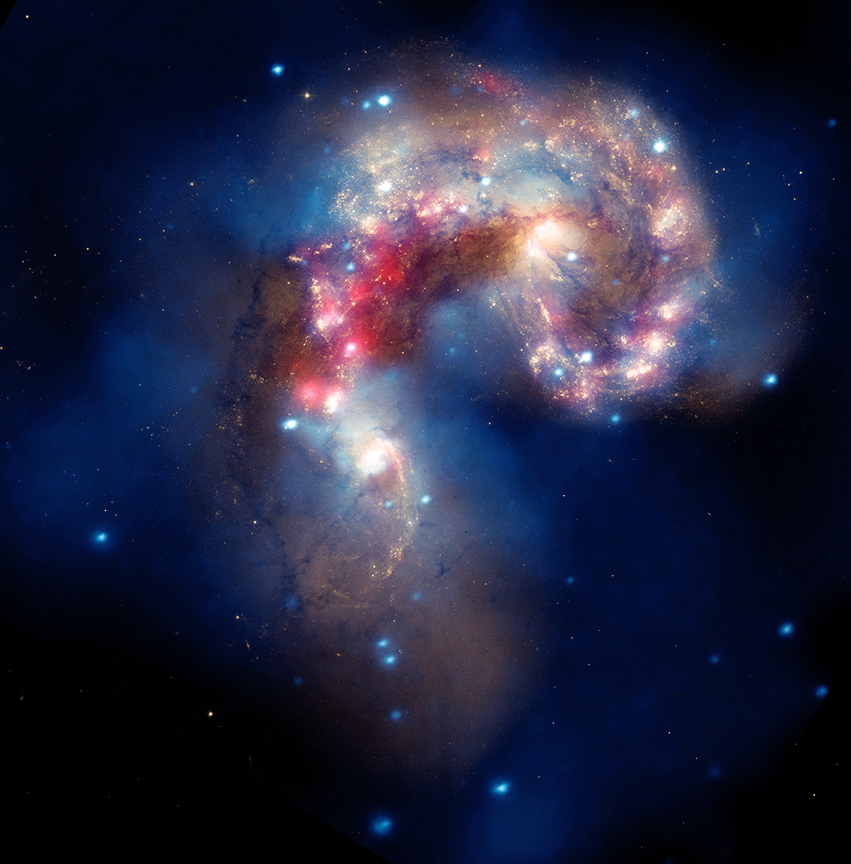
 Credit: X-ray: NASA/CXC/SAO/J.DePasquale; IR: NASA/JPL-Caltech; Optical: NASA/STScI
Credit: X-ray: NASA/CXC/SAO/J.DePasquale; IR: NASA/JPL-Caltech; Optical: NASA/STScI
Great Antennae
The cosmic superhighway is crowded with galaxies, and collisions are pretty common. One of the most spectacular examples is the so-called Antennae Galaxies, a spectacular galactic collision which began to collide about 100 million years ago and which is continuing today. The image above is a view from three of NASA's Great Observatories: X-ray emission as seen by the Chandra X-ray Observatory in blue, high-resolution optical emission as seen by the Hubble Space Telescope in gold and brown, and infrared emission seen by the Spitzer Space Telescope in red. Each observatory forms a complementary image of the physical processes which occur when galaxies collide. X-rays show the effects of collision-driven massive star formation, and the hot gas the supernovae of these stars produce. Hubble sees optical emission from the current population of medium-mass stars (some of which existed in the galaxies prior to the collision, some which were formed by the collision), along with dark lanes of dust. And Spitzer sees the hot dust marking the sites of new, hidden star formation. The collision of galaxies is a powerful mechanism by which the Universe forms new stars, new merged galaxies, and creates and disperses complex chemical elements.
Published: August 23, 2009
<
HEA Dictionary ● Archive
● Search HEAPOW
● Other Languages
● HEAPOW on Facebook
● Download all Images
● Education ● HEAD
>

Each week the HEASARC
brings you new, exciting and beautiful images from X-ray and Gamma ray
astronomy. Check back each week and be sure to check out the HEAPOW archive!
Page Author: Dr. Michael F. Corcoran
Last modified Tuesday, 27-Feb-2024 10:06:35 EST


